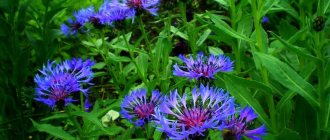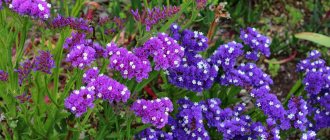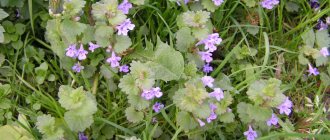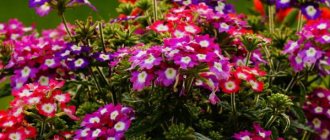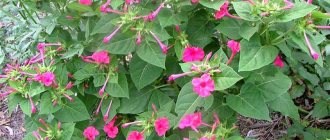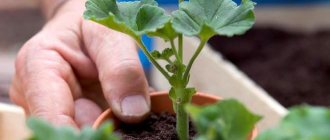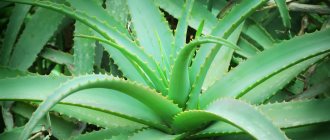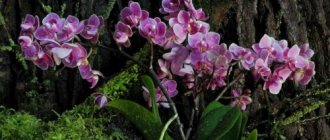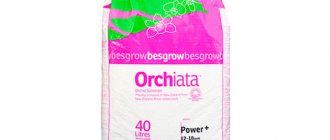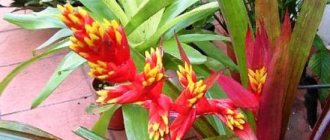Everyone knows valerian extract, or in common people - “valerian”. As soon as you get a little excited and grab your heart, you can immediately hear the advice to “drink some valerian.” And indeed, the excitement will subside, the heartbeat will return to normal, and your soul will feel lighter. This simple medicine is found in almost every home, but it is surprising that few people know what the plant itself looks like, although it is found everywhere. Valerian officinalis is a herbaceous perennial that can be grown in open ground and in your own apothecary garden. Planting and care are not difficult, but there are some growing features, especially for medicinal purposes, that you should be aware of.
It is interesting that in pharmaceuticals the concept of “valerian” is a collective one, including several varieties of the plant, since different types of this crop have healing properties.
Botanical description
Valerian is not difficult to distinguish from other plants if you know its botanical features well: The flowers are small in size - about 4 mm. They can be white, pink, or purple in color. They are collected in small corymbose-shaped inflorescences located at the top of the plant.
The flowering process occurs throughout the summer. At the same time, the flowers emit a fragrant smell that cannot be confused with any other aroma. Even grasses growing nearby can absorb it.
The leaves in the lower part of the plant are long-petiolate, and in the upper part they are opposite. They can grow both in groups and individually. The number of leaves towards the top becomes less and less.
There can be several stems on one bush, but a single option is also possible. The plant reaches a height of up to 1.5 m. The stem is characterized by density, cavity, and has a cylindrical shape.
The root system is loose, small, thick. It has many additional roots of a brownish tint. It is the root that has a large number of useful components. The process of fruit ripening begins at the end of summer and continues in September.
Externally, valerian is similar to some other plants, so when collecting, you should focus on the features indicated above.
The plant blooms from the second year of life from June to August
Reproduction
Some types of valerian reproduce exclusively by seeds (they do not have stolons), but ready-made seedlings can be found for sale in specialized retail outlets and nurseries. If you want to grow this plant in your garden, the best option would be a non-seed method, since it has several serious disadvantages:
- To grow a full-fledged marketable medicinal rhizome from seeds, it will take three growing seasons.
- The seeds have poor germination and continue to quickly lose it as they are stored.
- It is advisable to sow seeds immediately after collecting them, in winter, or to provide them with artificial stratification under strict temperature and time conditions, which is quite difficult and troublesome.
- Valerian seedlings necessarily need picking, which adds trouble and time.
Meadow valerian (victorious) is free from all the disadvantages associated with seed propagation, since its roots produce stolons - shoots of the rhizome intended for natural vegetative propagation.
Self-seeding
Valerian is prone to self-seeding. On the one hand, this solves the issue of propagation of the planting, on the other hand, it heavily clogs the area. In addition, if you let the seeds ripen “on the bush,” the rhizome will be fairly depleted. Therefore, when planting for the purpose of obtaining medicinal raw materials, it is recommended to pick off the inflorescences at least immediately after they begin to fade, or better yet, cut off the flower stalks. By the way, they can stand perfectly in a vase.
Reproduction by stolons
You can dig up stolons together with the preparation of rhizomes, waiting until late autumn. The tops of the dug up bushes are cut off, after which the rhizome and roots are washed, and the stolons are separated from them. There can be 5-8 of them on one plant. Due to their white color they are clearly distinguishable. In addition, they are significantly thicker than the lateral cord-like roots. They should have a green bud at the end. They can either have their own roots or be deprived of them, this does not affect survival rate.
The resulting planting material is planted in the garden bed immediately after separation from the mother bush. As a last resort, it is possible to postpone the event for 1-2 weeks. In this case, you need to store them in a cool place, taking measures to ensure that they do not dry out. To do this, you can put them in a bucket (without water) and cover them with cardboard, or you can simply dig them in the garden.
Stolons are planted at a distance of at least 0.5 m from each other, completely buried in the ground. In the spring they will sprout and can be replanted if necessary. The survival rate of such planting material is almost 100%.
Pharmacological properties
According to pharmacognosy, valerian officinalis has a number of positive effects on the human body, due to which it is used for medical purposes. Pharmacological actions are as follows:
- Calming effect. Perhaps this is the most famous property of this plant. If you ask a person what he would drink “for his nerves,” he will almost certainly answer – drops of valerian. Indeed, the herb helps calm the central nervous system and relieve muscle spasms. This in turn allows you to cope with nervous disorders, sleep problems, high blood pressure, and heart attacks.
- Normalization of the digestive process. Valerian-based products help relax smooth muscles, relieve spasms, and improve peristalsis. Therefore, the plant helps well with problems with the gastrointestinal tract, for example, with frequent constipation and pain in the gall bladder.
- Improving a woman's condition during menstruation. Many girls do not tolerate menstruation well, they experience pressure surges, headaches, and increased irritability. Valerian helps to cope with these manifestations.
- Allergic reaction. The herb calms the nervous system in case of neurodermatitis, which helps reduce the amount of skin rashes and the intensity of itching.
Valerian has a multifaceted effect on the body
. Valerian is harmless and does not harm human health. But you still need to use it in the dosages recommended by the instructions, as side effects are possible.
Similar species
When harvesting valerian officinalis, you should pay special attention to species similar in appearance to it, which often grow nearby. Some of them are poisonous and, therefore, if used incorrectly and carelessly, can cause harm to health. Similar types of valerian officinalis are:
- medicinal swallowtail – Vincetoxicum hirundinaria (Alexitoxicon officinale (Moench) St. Lager) – poisonous;
- Lobel's hellebore - Veratrum lobelianum Bernh - poisonous;
- hemp sapling – Eupatorium cannabinum – poisonous;
- meadowsweet (meadowsweet) – Filipendula ulmaria Maxim.
In addition, there are valerians, although they look similar to medicinal valerian, but do not have medicinal properties. First of all, this is whole-leaved valerian (Valeriana simplicifolia Kabath), etc. They can be distinguished by the absence of a characteristic recognizable aroma of rhizomes.
Growing Valerian
First of all, seeds are collected for future sowing. You can purchase them in a store or find them yourself by selecting several of the strongest specimens in the wild. During the ripening period, the seeds actively fall off, so they are not difficult to collect.
If the material for planting is prepared independently, then sowing is done in early spring of next year. After all, ripening occurs at the end of summer; it will not be possible to collect seeds earlier. It is not recommended to plant them before winter.
Before planting, prepare the soil. It should be loose and free of weeds. It is advisable to purchase ready-made soil in a store.
First, you should plant the seeds in seedling boxes or in greenhouses, then plant them in open ground. For sowing, make several small furrows, add seeds there and cover them with humus to about 1 cm. Next, carefully water the soil and make sure that it is always moist.
After 14 days, the first shoots appear. As soon as the plant has 4 leaves, it is transplanted to a permanent place. Usually planted in rows with a distance of 20 cm.
Further care for valerian involves eliminating weeds and maintaining soil moisture. The grass is usually fed before winter. To do this, use nitroammophoska or another product that contains phosphorus and nitrogen.
Briefly about the plant
Valerian plant is found in meadows and the edges of alder forests. She loves to grow in damp places, in the beds of abandoned rivers, in ditches.
The perennial has milky sap, large rhizomes, and straight stems. On branched stems, bluish leaves of ovoid or round shape grow. The flowers of the plant are small in size and form dense and strong umbrella-shaped inflorescences. The flowers come in white, pink-white and snow-white shades. Valerian blooms in early summer and blooms until the end of August. Some plant varieties grow two meters from the ground. For medicinal preparations, valerian roots are collected from mature plants in the fall or spring. The plant has a specific smell that cats are crazy about.
Use of valerian in medicine
Medicinal valerian is actively used in medicine. Homemade medicines are prepared on its basis, as well as pharmaceutical preparations.
What does it help with?
For medical purposes, valerian is used to combat various pathological conditions.
The indications are as follows:
- nervous system disorders;
- epilepsy;
- convulsions;
- increased excitability due to mental trauma;
- mild neurasthenia;
- depression;
- headache;
- neuralgia;
- neurodermatitis;
- failure of coronary circulation;
- neurosis;
- spasms of the muscles of the digestive organs.
Medicines based on valerian pose virtually no danger to the body, but it is still best to take them after consultation with a specialist.
What remedies are prepared in folk medicine?
In folk medicine, valerian is used both in its pure form and in combination with other medicinal components.
Traditional medicine considers it a carminative (for bloating), an anthelmintic, and also a digestive aid.
To treat coronary blood flow disorders and tachycardia, the following infusion is prepared:
- pour a tablespoon of roots with a glass of boiling water;
- leave to infuse in a thermos for 8 hours;
- strain.
For the first 14 days, drink a third of a glass three times a day. Over the next 2 weeks, reduce the dosage to 2 tablespoons, then take a tablespoon for a month. Then take a break for a month and repeat the course of therapy.
To eliminate sleep disorders and neuroses, use the following decoction:
- 10 g of dried roots pour 200 ml of boiling water;
- place in a water bath for 15 minutes;
- let it brew for two hours;
- strain.
Take a tablespoon three times a day.
Valerian decoction The following herbs have a good calming effect:
- make a mixture of 1 part valerian roots, 2 parts mint, 2 parts trifoliate, 1 part
- hop cones;
- separate a tablespoon of the collection;
- pour 2 cups boiling water;
- leave to infuse for half an hour, then strain.
Treat twice a day with half a glass.
Valerian can be used not only for oral administration. It is great for preparing a bath with a soothing and relaxing effect. First you need to make the tincture as follows:
- Pour 100 g of raw material into a liter of cold water;
- put on fire, bringing to a boil;
- leave to infuse for 20 minutes;
- strain.
Pour the resulting product into the bath. The procedure time is 15-20 minutes. Valerian essential oil is also ideal for baths. It helps to relax, relieve fatigue and tension.
A bath with valerian serves to calm seizures, the heart and the entire nervous system
Pharmacy products
Valerian officinalis is widely used in the manufacture of various pharmaceutical preparations and herbal preparations. For example, you can find products such as:
- "Valocormid".
- "Valedrin."
- "Corvalol".
- "Valocordin".
- "Validol".
Many of these medicines are well known and are available in almost every home medicine cabinet.
Valerian is also sold in its pure form in the form of an alcohol tincture or extract. The tincture is made by mixing 70% alcohol and a medicinal plant in a ratio of 1 to 5. It can be taken by both adults and children as a sedative.
Valerian extract is sold in the form of yellowish-coated tablets. Prescribed 2 pills at a time, also as a sedative.
Types and varieties
The genus of Valerian is very numerous and, in addition to the species Valerian officinalis, includes 288 species, including:
- Amur valerian – Valeriana amurensis P.Smirn. ex Kom.;
- doubtful valerian – Valeriana dubia Bunge;
- Valeriana fedtschenkoi Coincy;
- whole-leaved valerian – Valeriana simplicifolia Kabath;
- valerian - Valeriana sisymbriifolia Vahl;
- lipolia valerian – Valeriana tiliifolia Troitzk.;
- tuberous valerian (tuberous) – Valeriana tuberosa L. and others.
Several small related species with medicinal properties are combined under the name Valerian officinalis:
- high valerian – Valeriana exaltata Mikan;
- brilliant valerian – Valeriana nitida Kreyer;
- valerian - Valeriana stolonifera Czern.;
- Russian valerian – Valeriana rossica Smirn.;
- Don valerian – Valeriana tanaitica Worosch.;
- Grossheim's valerian - Valeriana grossheimii;
- valerian hill - Valeriana collina Wallr. (Valeriana angustifolia Tausch);
- elderberry valerian – Valeriana sambucifolia Mikan;
- meadow valerian;
- Volga valerian – Valeriana wolgensis Kazak.
Valerian officinalis. Latin name : Valeriana officinalis L.
Valerian officinalis. Other names : pharmaceutical valerian, cat's herb, cat's root, forest incense, earthen incense, cistus, forty-shrub herb, shake grass, maun, odolyan, marian, aromatic, devil's potion, devil's rib, etc.
Contraindications for use
It is not recommended to use valerian-based products in the following cases:
- individual intolerance to this herb;
- liver diseases;
- gallbladder pathology;
- increased drowsiness, lethargy;
- depressed state of the central nervous system, developing against the background of any disease;
- children under 3 years of age.
Valerian should be used with extreme caution in the following cases:
- bearing a child;
- breast-feeding.
Valerian should be used with extreme caution during pregnancy.
People undergoing treatment with valerian will have to stop driving. The fact is that the medicine helps slow down reactions and reduces concentration.
Side effects
It is almost impossible to achieve such an overdose of valerian that death occurs. However, with its long-term use and constant exceeding of the recommended dose, adverse reactions of the body may occur.
These include the following:
- drowsiness;
- general weakness;
- state of apathy, depression;
- poor performance.
If such signs appear, you should stop treatment and visit a doctor.
Application in cosmetology
Valerian oil has a calming effect.
For cosmetic purposes, oil made from valerian root is used. Use it to care for the skin of your hands and face. It also allows you to get rid of irritations on the skin, various rashes, and neurodermatitis.
Valerian-based products are also being prepared that can fight wrinkles and have a lifting effect.
Features of plant care
Valerian is easy to care for. Despite the fact that it can withstand drought, it is still worth watering. To form high-quality rhizomes, valerian needs to be watered abundantly, since moisture promotes the development of valuable medicinal rhizomes. During the summer it is important to feed valerian three times. You can simply water the plant with regular mineral fertilizers. Be sure to loosen the soil between the rows and remove weeds. If the flower stalks are removed in mid-summer, valerian will acquire powerful rhizomes. If you plant and care for valerian correctly for one season, you can get 300 grams of high-quality medicinal raw materials.
Procurement of raw materials
Valerian is harvested in the autumn after the plant has flowered and the stems have turned brown and dried out.
The roots of this plant contain the greatest number of useful components. Therefore, they dig up the roots, clean them well from the soil, wash them and dry them in the open air or in the oven.
Freshly dug roots are white and have no odor. But after drying, they become dark brown and acquire a characteristic aroma.
Thus, valerian officinalis is a healing plant that can have a calming effect on the human nervous system. Therefore, it is actively used in medicine, both traditional and folk. The grass grows in the wild, but if you wish, you can start growing it in garden conditions.
Habitat
Valerian medicinal homeland is the Mediterranean. The plant is widespread in Europe, with the exception of the Far North and south, as well as in Central and Northern Asia.
About 40 species and varieties of valerian grow in the CIS. It can be found in almost the entire European part, in Ukraine, Crimea, the Caucasus, Western and Eastern Siberia, the Far East, Sakhalin, with the exception of the desert regions of Central Asia. Grows in a wide variety of soils.
Distribution of valerian officinalis: forest glades, edges, open forests, banks of reservoirs, rivers, lowlands, water meadows, damp places, grass and peat bogs, mountain slopes, among bushes, etc.
Usually it does not form dense thickets and grows sparsely. Grown on an industrial scale.
